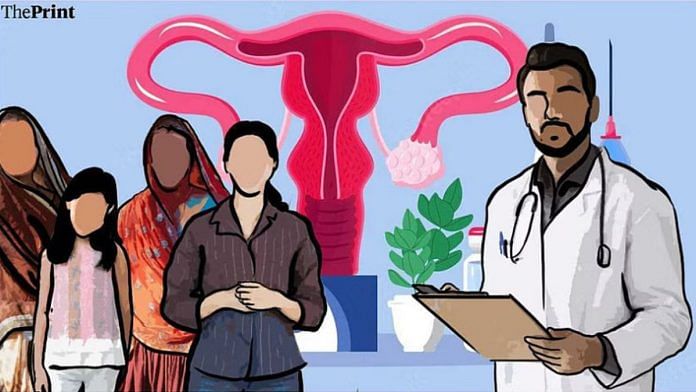Women may live longer than men, on average, but they spend 25% more of their lives in debilitating health, according to a new report from the World Economic Forum and the McKinsey Health Institute launched at Davos.
This “women’s health gap” equates to 75 million years of life lost due to poor health or early death each year. Closing the gap would benefit 3.9 billion women, giving them an extra seven healthy days a year, or an average of 500 days over a lifetime.
Not only that, but it could also boost the global economy by $1 trillion by 2040 from fewer early deaths and health conditions, and a greater capacity for women to contribute to the economy and society, finds Closing the Women’s Health Gap: A $1 Trillion Opportunity to Improve Lives and Economies.
For every $1 invested in women’s health, the report projects there would be around $3 in economic growth.
The Forum’s Annual Meeting featured three sessions looking at elements of women’s health – and what needs to be done to address the gap, including more research, care delivery, data and investment.
Here are some of the key quotes from leaders at Davos.
Poor health impacts working women more
“Women do live longer in poor health,” said Lucy Perez, Senior Partner at McKinsey & Company, in the Open Forum: Medicine and Women.
“That is what this health gap refers to. [We found] that the majority of this health gap is impacting women during their working years, between the ages of 20 and 60, not at the end of life.
“A lot of this gap is also the result of conditions that are actually not female-specific. A lot of the women’s health burden is associated with conditions that impact both men and women, but impact women differently or disproportionately.”
In many instances, women will take longer to get a diagnosis or will not get appropriate care, added Perez, because “perhaps a physician does not recognize the manifestation of a heart attack in a woman”.
Women’s health is under-funded
A lack of financial investment in medical research into women’s reproductive and maternal health is also an issue, Perez pointed out: “Ultimately, there’s a lot less funding going into this space, which is odd when you think that women make up half of the population.”
McKinsey research finds that less than 2% of healthcare research and innovation is invested in female-specific conditions beyond cancer.
In the session that launched the Forum and McKinsey report, Closing the Gender Gap in Health, Anita Zaida, President, Gender Equality, Bill & Melinda Gates Foundation, discussed the new Global Alliance for Women’s Health, which she co-chairs.
“Women’s health has been a long under-invested, neglected area in global health. There’s so much we can do and so much potential to make rapid advances in this field, that we felt that the moment is right to bring together a multi-stakeholder platform, to bring attention to this issue and increase investments in women’s R&D (research and development).
“There are so many health problems that women have that have been under-researched and there’s a lack of data … we need to bring attention to the poor healthcare that women get and how do we change that?”
Women need to be heard
Jude Kelly, CEO and Founder of The WOW Foundation, spoke openly about her own experiences of childbirth and its complications in the session – and how little she knew about them beforehand.
“When I had my first miscarriage, I knew nothing about miscarriage. I didn’t realize that 1 in 4 women miscarry because we never discussed miscarriage.
“When I had my first child and went into labour, I actually thought I had food poisoning because I didn’t really understand where the pain happened.
“All the silencing around the body, and things to do with women, carries on through society and it means that women, who should be equipped to discuss with each other and help each other, are not equipped properly.
“We don’t know how to speak about our health rights. We don’t know how to ask for them.”
“Women have no problem speaking up,” said India’s Minister of Women and Child Development, in the session Closing the Gender Gap in Health. “The problem is, how much are they heard? And I think that articulates the gap.”
We need to redesign healthcare for women
Paula Bellostas Muguerza, Senior Partner and Europe Co-Lead, Health at Kearney, joined a press conference on Redesigning Healthcare with Women in Mind.
Kearney has led an open letter, signed by more than 40 partners in the newly launched Global Alliance for Women’s Health, to call for action to redesign healthcare with women in mind.
“We do not understand female biology as well as we do that of men … Endometriosis affects 10% of women of reproductive age, but doesn’t see the level of investment or interest in finding a cure,” said Muguerza.
“At the heart of it is a societal problem because we are not prioritizing the lives of women in the same way that we do those of men. And this then leads to not investing in it. When a woman enters the healthcare system, she is more likely to have her concerns dismissed, ignored or potentially missed altogether.
“We know what has to be done. We need to work on policy and advocacy. We need to redesign infrastructure for women-centric care. We need to make sure that capital is flowing into this. We need to rethink research and development, both in what we research, but also in how we research it.
“We need to close the data gap and then, finally, we need to reimagine medical education because we’re still using ‘reference man’ as the basis for our medical schools. How about ‘reference woman’?”
This article was originally published in the World Economic Forum.



